Kurt Cobain's key guitars
We check out Nirvana icon's Mosrites, Mustangs and more
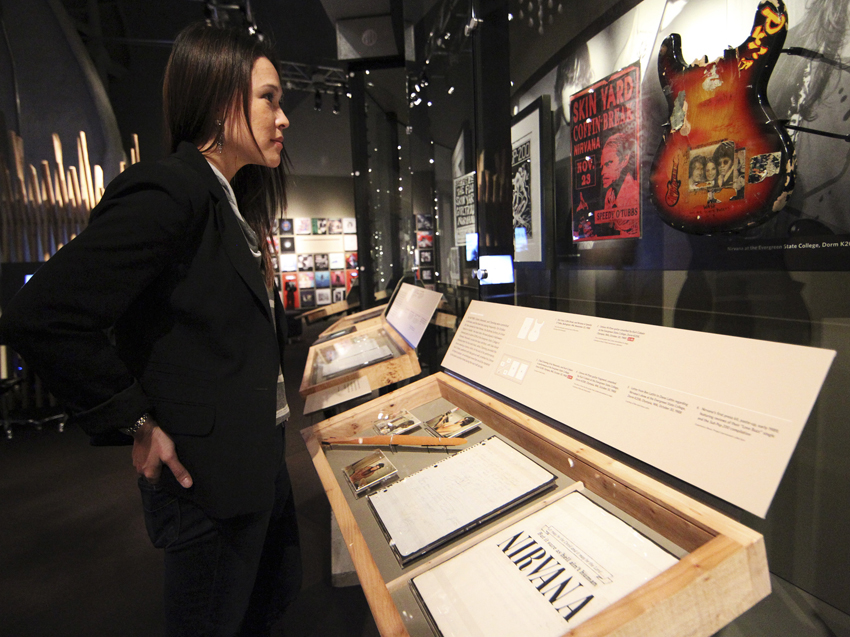
Univox Hi-Flier
Kurt’s approach to gear was frequently utilitarian, especially early on.
He used a variety of guitars through 1988 and 1989: frequently, these Univox Mosrite copies – a model called the Hi-Flier, right-handed and strung for left – as well as an Epiphone ET-270, Hagstrom II, Washburn Force 31 and Greco Mustang copy.
“I preferred the humbucker/wraparound tailpiece version, both structurally and sonically,” says Kurt’s former guitar tech, Earnie Bailey, of the Univoxes.
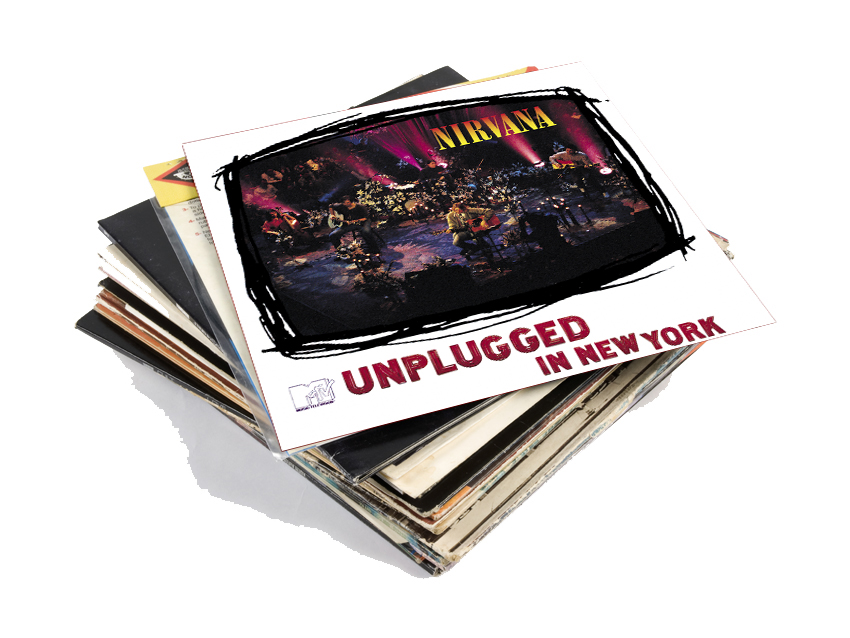
Martin D-18E
There were two acoustics in contention for Kurt to use for Nirvana’s MTV Unplugged recording; the Epiphone Texan with ‘Nixon Now’ sticker was also set up by Earnie in the week prior to the show, as well as this adapted right-hander.
“The Texan was easily the sonic superior,” he reveals. “There wasn’t much of a challenge, since the D-18E’s spruce top was weighted down by a trio of volume and tone potentiometers, a toggle switch and a Bartolini soundhole pickup mounted between a pair of hefty [stock] 1950s DeArmond Dynasonic pickups [these ended up being bypassed in favour of the retrofit Bartolini].”
But, often the contrarian, despite the Texan’s superior resonance and playability, Kurt was firmly in favour of the Martin.
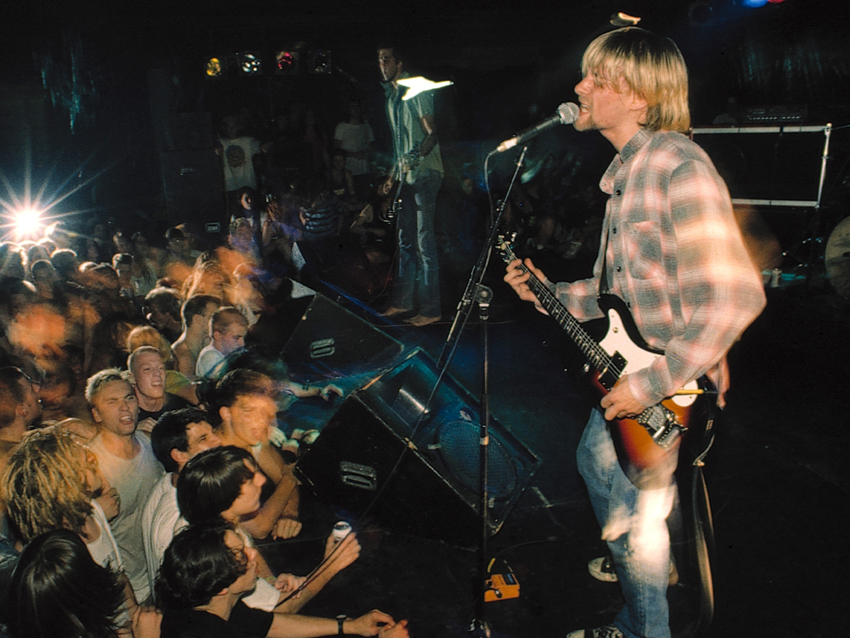
Mosrite 1968 Mark IV Gospel
One of Kurt’s favourite guitars, and another that underlines his attraction to surf-style designs, this right-handed Gospel is notable for a number of reasons.
Unlike many of his Univox Mosrite copies, this original was never smashed onstage (and he only ever owned one other Mosrite). A good thing, too, as it was incredibly rare.
Earnie fills us in: “I would easily put this guitar in his top-five favourites, and after a good deal of research, an educated guess would suggest that Mosrite built less than 10 of these guitars. Kurt and [Melvins drummer] Dale Crover went out guitar shopping and bought the Mosrite Gospel from Real Guitars in San Francisco. At first, he wouldn’t play it, as the stock frets made it difficult for him to play, so they took it to Valdez Guitar on Sunset Blvd to have bigger frets installed in the neck.
"This guitar appears in the time just prior to recording Nevermind, and is believed to be one of a very small number of instruments he owned while writing material for the album.”
I
t was also used at two infamous shows for the band; the chaotic set at the Motorsports Garage on September 22, 1990 (with Mudhoney’s Dan Peters filling in on drums) and the OK Hotel gig in the city on April 17, 1991 when Nirvana (now with Dave Grohl) aired Smells Like Teen Spirit for the first time. It sold to a private bidder in 2006 but is now on display at EMP Musuem’s Nirvana exhibition.
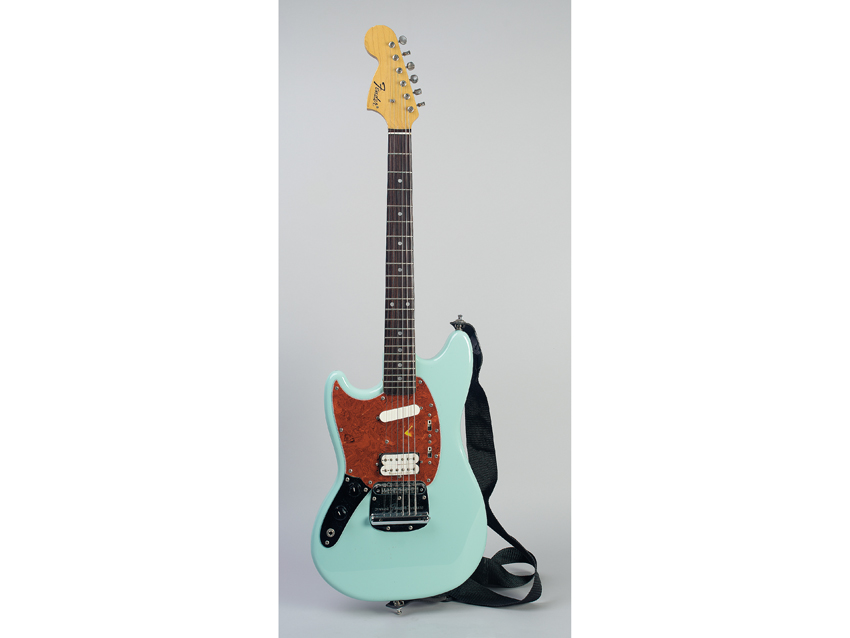
Japanese Fender Mustang
Kurt once described the Mustang as his favourite guitar design, but it wasn’t until the In Utero tour they became a mainstay live.
Earnie: “In 1993, he abandoned both his Univox and Jaguar at the arrival of his Japanese Mustangs. I think he liked the diminutive scale, and its underdog status in the Fender family, and after being modded, it became a reliable guitar.”
These mods included cutting the nut to take heavier strings, shimming the neck for improved bridge angle and installation of a Gotoh tune-o-matic bridge. Earnie also had to block the vibrato for Kurt, and flip the tailpliece to allow the strings to feed directly through.
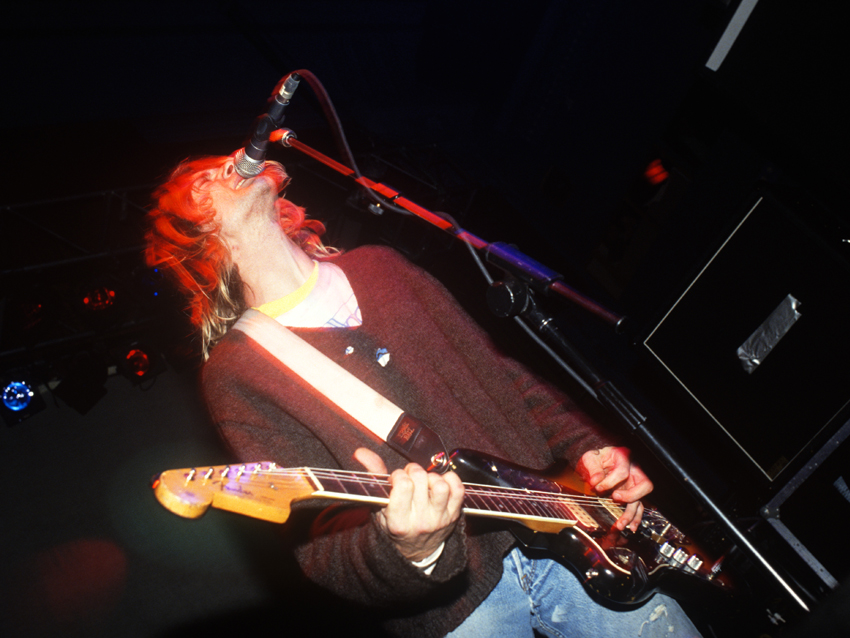
Fender 1965 Jaguar
“The Jag first appeared live three months after the album was finished,” notes Earnie. “So it’s hard to tell when it was procured. My guess would be between August 16–20, 1991.”
The origins of this guitar, that became a favourite on the Nevermind tour, has intriguingly murky provenance. Kurt told Earnie he picked it up from an ad in the LA Recycler, but information about its previous owner is non-existent. It had its own custom flight case, a left-handed neck with a Strat headstock and a 50s-style spaghetti headstock decal.
It had two humbuckers (a DiMarzio Super Distortion installed in the bridge position and a white DiMarzio PAF in the neck), black chrome bridge, three control knobs and a toggle switch. It’s a unique guitar, one that became Kurt’s mainstay after the obliteration of the Vandalism Strat.

Total Guitar is Europe's best-selling guitar magazine.
Every month we feature interviews with the biggest names and hottest new acts in guitar land, plus Guest Lessons from the stars.
Finally, our Rocked & Rated section is the place to go for reviews, round-ups and help setting up your guitars and gear.
Subscribe: http://bit.ly/totalguitar
“Its mission is simple: unleash the power of any amplifier or line-level source without compromise”: Two Notes promises a “watershed” in tube amp control with the Torpedo Reload II
MusicRadar deals of the week: Enjoy a mind-blowing $600 off a full-fat Gibson Les Paul, £500 off Kirk Hammett's Epiphone Greeny, and so much more
“Its mission is simple: unleash the power of any amplifier or line-level source without compromise”: Two Notes promises a “watershed” in tube amp control with the Torpedo Reload II
MusicRadar deals of the week: Enjoy a mind-blowing $600 off a full-fat Gibson Les Paul, £500 off Kirk Hammett's Epiphone Greeny, and so much more











